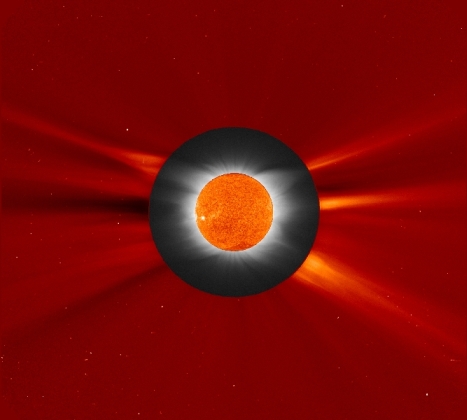Solar Eclipse on 29 March 2006

Click on the image for larger/full field version. |
|
|
|
With a unique view from the first Lagrangian point (L1), outside the disturbing influence of Earth's atmosphere, SOHO's Large Angle Spectrometric Coronagraph (LASCO) produces its own eclipse all the time by simply blocking direct light from the solar disk. Other instruments on board look directly at the Sun, with the same advantage of an uninterrupted view - there are no nights on SOHO, and the Moon never gets in the way.
So, when a total eclipse happens to be observable from Earth, SOHO is one of the primary sources of information about what lies in wait for the eager observers in possibly remote locations. This is also the case this time (on 29 March 2006), when a number of expeditions go to e.g. Turkey, Nigeria, or Libya to catch the magic moment. Although SOHO has its own eclipse, there is still a lot to gain from ground based observations, with sophisticated equipment that can be fine tuned for particular goals.
A number of groups collaborate with SOHO, requesting special
observations that will be used for comparisons with the ground based
images. Details on SOHO support observations can be found at our
here.
Instruments involved are the Coronal Diagnostic Spectrometer (CDS),
the Extreme ultraviolet Imaging Telescope (EIT), MDI (Michelson
Doppler Imager), UVCS (Ultraviolet Coronagraph Spectrometer).
Related Links


